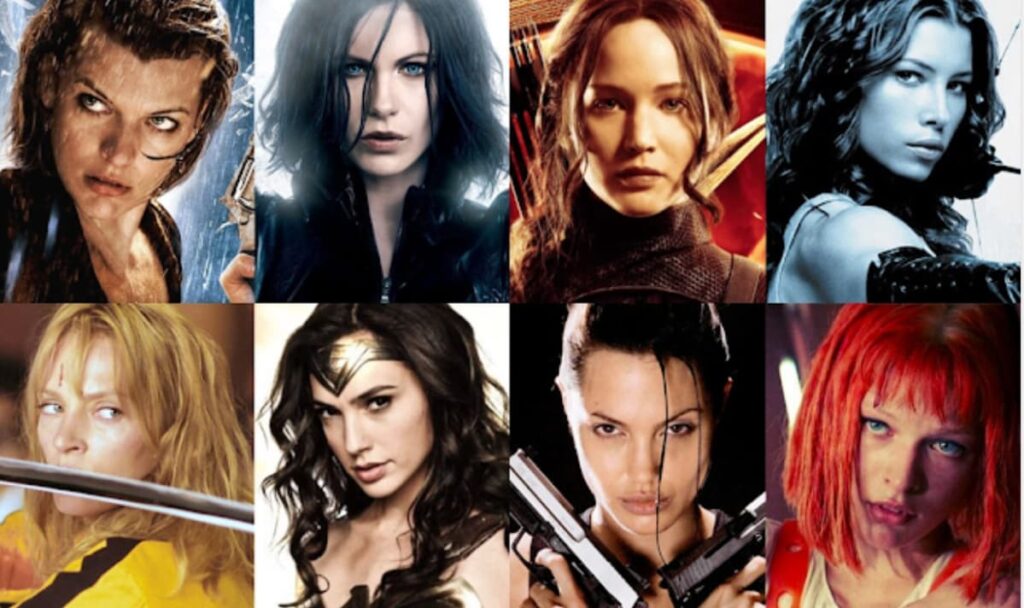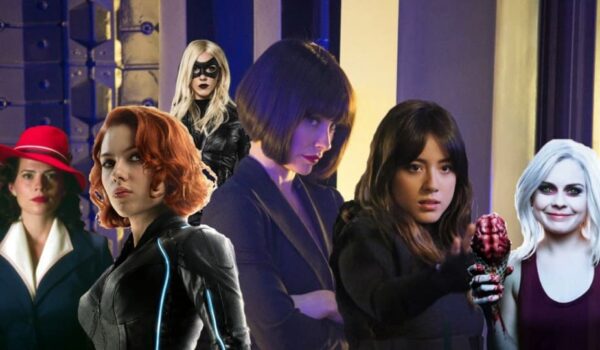Cinema is not just a mirror reflecting reality, but also a powerful tool that shapes societal attitudes and cultural codes. At the center of this cinematic evolution has always been the female role, which has evolved from passive damsels in distress to independent and complex characters, vividly illustrating the changes in the public perception of women. Our study delves into cinematic history to trace how female characters have evolved on screen and how these changes reflect broad social transformations from the early twentieth century to the present.
Early Cinema: 1900-1940
At the dawn of cinema, in the first decades of the twentieth century, female characters were often limited to two opposing archetypes: innocent and pure-hearted ladies in need of protection and dangerous femme fatales who manipulated men with their cunning and sensuality. These roles reflected the gender norms of the time, when society strictly delegated passive and dependent roles to women, and their “danger” and “independence” were often shown only in the context of seduction and manipulation.
Examples from actual films of the time clearly show how cinema became a tool to reinforce these stereotypes:
- “Broken Lily” (Broken Blossoms, 1919) – In this film directed by David W. Griffith, Lillian Gish plays the role of Lucy Burroughs, a young and innocent girl who suffers from her father’s cruelty and needs protection. Her character is the archetype of the helpless victim, which emphasizes traditional notions of female vulnerability.
- “Cleopatra” (Cleopatra, 1934) – Ted Bara and then Claudette Colbert’s 1934 version portrayed Cleopatra as a powerful femme fatale who uses her sexuality and charisma to manipulate the political leaders of Rome. These films emphasize both the danger and attractiveness of strong women, who are nevertheless often portrayed as negative characters because of their ambition and independence.
The Golden Age of Hollywood: 1940-1960
The period from 1940 to 1960 is often referred to as the “Golden Age” in Hollywood, and this time was a watershed in the portrayal of female characters in film. The era was marked by a gradual shift from traditional archetypes to more complex and multifaceted female characters. Women on screen began to move beyond the stereotypical roles of victims or villains and began to appear in characters that demanded a proactive stance and diversity of character.
Examples from films of the time show this transition:
- “Casablanca” (1942) – Ilsa Lund, the character played by Ingrid Bergman, is one of the most memorable images of the time. At first glance, she may appear to be simply a romantic figure dependent on male decisions, but Ilsa actually has a deep personal history and complex motivation. Her decisions, including returning to her husband and refusing to resume her relationship with Rick, demonstrate her capacity for independent choice and moral strength.
- “All About Eve” (1950) – This Joseph L. Mankiewicz movie introduced Eve Harrington, a character who, played by Bette Davis, transforms from humble groupie to ambitious star. Eva is an example of a woman who actively and purposefully goes towards her goal, overcoming many obstacles. This image was innovative for its time, as it showed a woman who strives for success and independence, not limiting herself to the limits of traditional femininity.
Revolution 1960-1980
The 1960s and 1970s saw significant changes in the portrayal of female characters in cinema, inspired by the rise of the feminist movement and public demands for more realistic and in-depth portrayals of women. Filmmaking began to move away from stereotypical images of brides and villains to the creation of more complex, self-reliant and independent characters, which coincided with broader social changes in attitudes towards gender.
Examples from films of the time that illustrate this trend are:
- “Chinatown” (1974) – In this film directed by Roman Polanski, Faye Dunaway’s character, Evelyn Mulray, is presented as a complex and multifaceted figure. At first glance, she appears to be a victim of circumstance and manipulation by men, but as the plot unfolds, Evelyn shows strength and independence. Her struggle for personal happiness and truth in conflict with the powerful forces of society places her at the center of the plot, which was a departure from the traditional portrayal of women as passive figures.
- “Annie Hall” (1977) – In Woody Allen’s movie, the main character Annie Hall, played by Diane Keaton, is a prime example of an independent and intellectual woman. She is not just an object of love or interest for a male character, but a full-fledged, charismatic character with her own history, dreams and philosophy. Annie Hall is a symbol of a feminist character who shatters the notions of the “traditional” woman in cinema.

Contemporary Cinema: 1980-2020
From the 1980s to the early 2020s, the movie industry went through a significant change in attitudes towards the portrayal of female characters. Not only have women been given more multifaceted and complex roles, but they have also begun to come to the fore in genres traditionally dominated by men, such as science fiction, action films, and thrillers. These changes reflect a broad social shift in perceptions of gender roles and abilities.
Examples from movies:
- “Terminator 2: Judgment Day” (1991) – This James Cameron film was a milestone in the portrayal of women in movies due to the character of Sarah Connor, played by Linda Hamilton. Sarah Connor transforms from the victim of the first movie into a strong, determined warrior capable of physical feats and tactical thinking. She is not just physically strong, but also shows a deep concern for her son and the future of humanity, demonstrating the complexity and multi-layered nature of the character.
- “Black Panther” (2018) – In this Marvel movie, the characters Okoye, played by Danai Gurira, and Shuri, played by Letisha Wright, emerge as key figures in the story. Okoye, the leader of the warrior group Dora Milaye, demonstrates exceptional fighting skills and loyalty to her people. Shuri, the younger sister of King T’Challa, is a brilliant scientist and innovator responsible for many technological advances in Wakanda. These characters serve as prime examples of how women can be presented as leading, intellectually and physically powerful figures.
Conclusions
Studying the evolution of female characters in cinema not only illuminates art history, but also reflects profound social changes in the perception of gender roles. From initial stereotypes depicting women as objects to be rescued to contemporary heroines symbolizing strength and independence, cinema has undergone a significant journey of transformation. Today, female roles in film portray complex individuals with diverse histories and characteristics, which not only enriches the cinematic experience but also contributes to a deeper understanding of women’s issues. This portrayal of women contributes to breaking down gender stereotypes and shapes more balanced and realistic gender relations in contemporary society, actively participating in the formation of new social norms and expectations.
